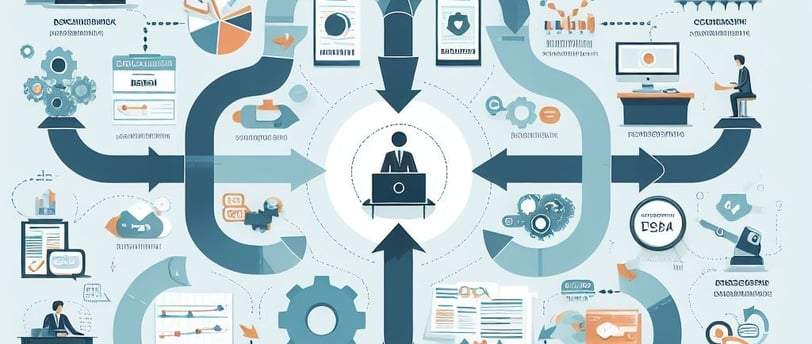Creating Strong and Efficient Business Processes
Where do we start?
Omar Rebaza
12/8/20232 min read


Every business has a recipe- actually, many recipes indeed. Where we find the most opportunity for improvement is in clearer and more effective business processes. Strong and streamlined business processes are the backbone of organizational effectiveness. This blog embarks on a journey to explore five strategies that businesses can employ to not only develop but also sustain robust and efficient business processes.
1. Process Mapping and Analysis: Blueprint for Success
The first step in developing strong business processes is understanding them at a granular level. Process mapping involves documenting every step of a workflow, from initiation to completion. This visual representation serves as a blueprint for analysis. By scrutinizing each step, businesses can identify bottlenecks, redundancies, and opportunities for improvement. This process-driven introspection lays the groundwork for crafting more efficient workflows.
2. Technology Integration: Empowering Processes with Innovation
In the digital age, leveraging technology is not just an option; it's a necessity for efficient business processes. Businesses should invest in technologies that align with their specific needs, whether it's workflow automation, customer relationship management (CRM) systems, or data analytics tools. The integration of technology not only enhances operational efficiency but also provides valuable insights for informed decision-making.
3. Continuous Improvement Culture: Fostering an Adaptive Environment
Efficiency is not a destination; it's a journey. Cultivate a culture of continuous improvement within your organization. Encourage employees at all levels to actively participate in identifying and implementing process enhancements. Regularly assess the effectiveness of existing processes and seek feedback from those directly involved. This commitment to ongoing improvement ensures that your business processes remain agile and responsive to changing needs.
4. Cross-Functional Collaboration: Breaking Down Silos
Efficient business processes thrive on collaboration. Break down silos between departments and foster cross-functional collaboration. Encourage open communication channels and shared goals across teams. This collaborative approach not only improves the flow of information but also enhances problem-solving capabilities. When different parts of the organization work in harmony, processes become more efficient and aligned with overall business objectives.
5. Employee Training and Empowerment: The Human Element
Processes are only as strong as the people executing them. Invest in comprehensive training programs to ensure that employees have the necessary skills and knowledge to carry out their roles efficiently. Empower your workforce to take ownership of their processes, encouraging them to suggest improvements and innovations. A knowledgeable and engaged workforce is a driving force behind the success of efficient business processes.
Conclusion: Paving the Way for Business Excellence
Developing strong and efficient business processes requires a strategic and holistic approach. By mapping and analyzing processes, integrating technology, fostering a culture of continuous improvement, promoting cross-functional collaboration, and investing in employee training and empowerment, businesses can pave the way for excellence. The key is to view business processes as dynamic entities that evolve with the needs of the organization. In doing so, businesses not only enhance their operational efficiency but also position themselves for sustained success in a competitive business landscape.
